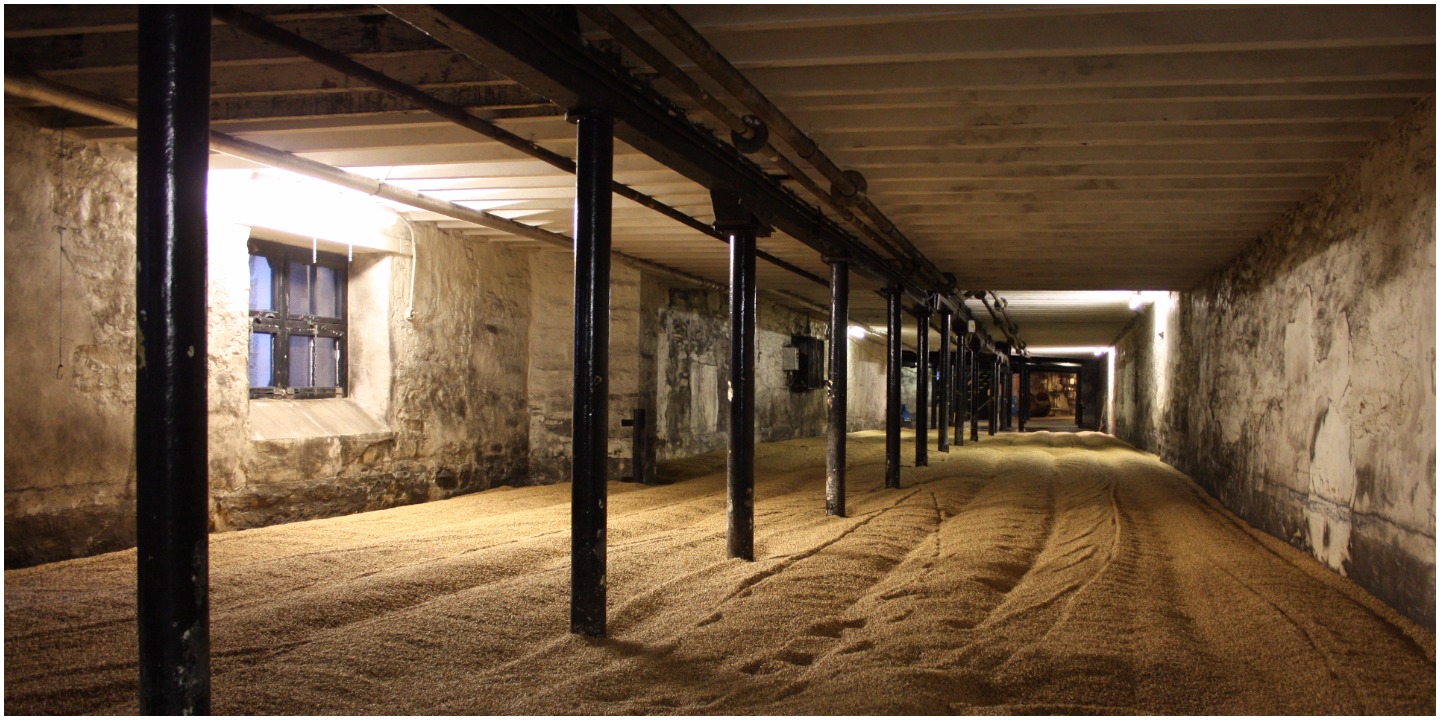Scotch 101: What is floor malting? (And does it make any difference?)
Uncategorized
If you’re new to the world of malts and peats, then you might never have heard of floor malting. And there’s good reason for this – it’s not common practice anymore. It hasn’t been for the past half a century.
The vast majority of distilleries stopped the process in the 1960s and have moved on to other methods that get the same result. However, some distilleries – Laphroaig and Highland Park, for instance – are passionate about their continued use of the floor malting process and are proud to continue malting their grains the old fashioned way.
This begs the question – does floor malting really make a difference? Or is it just a marketing ploy that makes the whisky seem artisan and handcrafted?
Hold on, what on earth is floor malting?
We’re glad you asked.
(Before we get started, if you’re a little wobbly on what the term malting means, it might be a good idea to brush up on that. Check out our guide to whisky terms you should know – there’s a short explanation in there.)
In a nutshell, floor malting is a traditional method of malting grain that dates all the way back to the 3rd Century A.D. (For context, that’s around the time that the Roman Empire started to fall into crisis. Or, in other words, a long time ago.)
After steeping the grain, the floor malting process requires the wet grain to be put on a smooth concrete floor while it germinates. Over the course of four or five days, the grains germinate and produce that sweet, sweet sugar that is fermented into alcohol.
During that time, the grain is turned – either by hand or machine – every eight hours or so, in order to prevent it growing roots and forming a ‘mat’.
Then, once the maltsman feels that the right amount of sugar and enzymes have been produced, the grain is collected and moved into the kiln to stop the malting process.
Fun fact: In times gone by, all of the turning of the grain used to be done by hand using a big malt shovel. But, of course, this required constant bending of the body and – after a lifetime of doing so – the maltsmen used to suffer from bone deformities. Much like housemaid’s knee or tennis elbow, this occupational disease was given a name: Monkey Shoulder. (Which now, of course, is the name of a popular blend of Glenfiddich, Balvenie and Kininvie. And, as commercial blends go, it’s pretty good!)
Right, got it. What’s the alternative? And why do other distilleries avoid floor malting?
Aha. That’s the big question, isn’t it?
To understand why lots of distilleries stopped floor malting, we have to consider the practical issues that come with it.
Not only is it difficult and extremely arduous to produce floor maltings, but it takes expertise to create a climate in the malting room that allows optimal germination. As soon as the weather shifts (which it does all the time in Scotland), the temperature and humidity of the malting room shift too. This has a knock-on effect on the germination – if it stops germinating, mould and fungi start to form. (Which, of course, isn’t desirable. Nobody wants oak on the nose, fruits and nuts on the palate and a mushroom and stilton finish.)
Instead, industrial malting processes are able to provide a consistent product in much larger quantities. And, since temperature and humidity are regulated carefully, the starch in the grain is turned to sugar much more efficiently than it is on malt floors.
However, perhaps we’re getting all sentimental here, but there is something to be said for the tradition of floor malting. It’s how whisky used to be made, way before the process was industrialised for profit. (One of the arguments against floor malting is that it exists just to draw visitors to distillery tours.)
As Jason Craig of Highland Park (one of only ten distilleries that continues floor malting) says:
‘I know there are accountants at Edrington who hold their head in their hands, and cry: “Why are we spending all this extra money?” There are cheaper, more efficient and less romantic ways of doing this, but the truth is great whiskies are not made on a spreadsheet; they’re not created on Excel…
Without floor maltings, we’d run the risk of becoming “mainstream smoky” or “an island-based Macallan”. Hand on heart, we’d continue floor maltings regardless of whether visitors came to the distillery.’
However, Neil Boyd, Director Of Malts at Ian Macleod Distillers disagrees with Jason.
‘I’m in the camp that believes the production of malt for malt whisky is best left to the experts – ie the maltsters. It’s about being able to access good-quality grain at the outset, and we feel they are more able to do that than we are. It’s about ensuring a sufficient supply of good-quality grain and meeting your production requirements. The guarantees a professional maltster can bring are very big plus points.
‘We know that modern production methods of maltsters are much more advanced these days, and they have the facilities to supply grain at whatever specification we need consistently. And they don’t let us down. The real measure of that is the quality of the spirit that comes off the still.’
He goes on to add:
‘Whisky making is now a big, international, mature industry – and that applies to malts as much as blends – and we need to reduce the risks of where you might fall down. So, it’s about reliance, certainty and consistency – those are the key things we need in an increasingly sophisticated and competitive market.
‘I can understand how attractive it is to the visitor to see how the very traditional methods were carried out, but I’m tempted to ask: if it’s a key factor in the production of malt whisky, why are they not doing it at such great distilleries as Macallan, Glenmorangie and Lagavulin? If it genuinely improved the quality of the whisky, surely more of us would be doing it.’
Floor malting: Our verdict
This is a tricky one, indeed.
If you’ve ever tried a Laphroaig or a Highland Park, you’ll know that they have a distinct character. And, according to the distilleries, this character comes – in no small part – from the floor malting process.
But at the same time, you’ve got Macallan and Lagavulin – both distilleries that have done away with floor malting for decades – and they have a distinctive character too.
As such, we think that this is one of those debates that comes down to personal preference. But at Whisky Foundation, we’re all about whiskies that have been lovingly crafted and deliberated over.
We like our whiskies independent, distinctive and hand-crafted.
And most of all, we like our whiskies authentic.
Sure, industrial malting might produce a more consistent result, but so does chill-filtration and adding caramel colouring. (And you know where we stand on that.)
And yes, floor malting might not be the most efficient way to produce whisky. It might even be out-of-date and out-of-touch with the rest of the whisky industry.
But we defy you to try a Highland Park or a Laphroaig and not say that there’s something just a little bit special about them.



